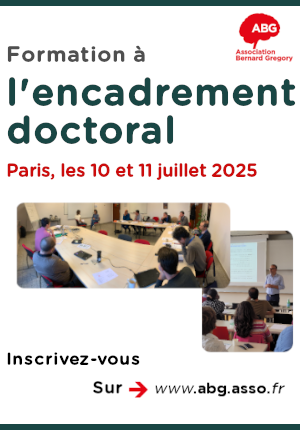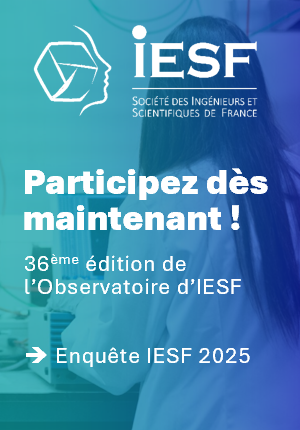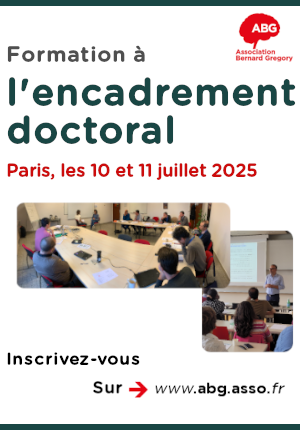PhD topic: Multilayered antiferroelectric supercapacitors for green and efficient energy storage: fundamental study for real-life applications
| ABG-131064 | Thesis topic | |
| 2025-04-15 | Public funding alone (i.e. government, region, European, international organization research grant) |
- Physics
- Materials science
- Engineering sciences
Topic description
Antiferroelectrics are dielectric materials composed of an antipolar array of dipoles, which display no macroscopic polarisation. They can be switched to a polar ferroelectric phase by application of an electric field: this field-induced phase transition is called switching, which induces a so-called “double hysteresis loop” in its polarisation vslectric field curve. The shape of this double hysteresis loop allows for efficient storage of electrical energy and a very fast discharge, useful for high-power applications [1, 2].
In particular, the development of sustainable alternatives to traditional lead-based ferroelectrics and antiferroelectrics is a crucial step towards creating environmentally friendly energy storage solutions.
On a more fundamental side, layering antiferroelectric and ferroelectric materials could also induce extremely rich topological physics, such as ferroelectric skyrmions [3, 4], which could be further energy storage properties of multilayers [5, 6, 7], but also in other applications (e.g. extremely low-power computing). Investigating how such antiferro/ferroelectric multilayers behave under an electric field (including the underlying mechanisms of electric field-induced phase transitions) is also a very important topic in the ferroic community.
This PhD research project will focus on the synthesis and characterization of novel materials that can replace toxic lead-based compounds in energy storage devices, such as supercapacitors.
Materials of interest are lead-free inorganic perovskites such as NaNbO3, AgNbO3, BiFeO3, (Nb0.5Bi0.5)TiO3, which are (anti)ferroelectric materials.
During this PhD, the candidate will:
- Design and synthesise eco-friendly alternatives to standard lead-based (anti)ferroelectrics in the shape of multilayers
- Analyse in-depth the electrical, structural, and chemical properties of these multilayers
- Investigate the suitability of these materials for energy storage devices, particularly supercapacitors, and optimise their performance for enhanced energy density and power density.
- Study in-situ (anti)ferroelectric multilayers under the influence of electric fields and temperature change to elucidate their underlying mechanisms of their phase transitions
The first step of this PhD project is to synthesise lead-free antiferroelectric multilayers [7] by chemical solution deposition (CSD) and pulsed laser deposition (PLD) and to optimise their density of storable energy. The second step of this project is to shed light on the electric-field induced switching mechanisms of these multilayers to further improve our knowledge of these materials.
Main experimental techniques:
Chemical solution deposition (CSD) and pulsed laser deposition (PLD) for depositing multilayer thin film materials; x-ray diffraction (XRD), scanning electron microscopy (SEM), transmission electron microscopy (TEM), atomic force microscopy (AFM) for (micro)structural characterisation; x-ray photoelectron spectroscopy (XPS), electron diffraction spectroscopy (EDS) for chemical analysis; electrical measurements (polarisation, capacitance, permittivity).
Bibliography:
[1] B. Xu, J. Íñiguez, and L. Bellaiche, ‘Designing lead-free antiferroelectrics for energy storage’, Nat Commun, vol. 8 (2017)
[2] Z. Liu et al., ‘Antiferroelectrics for Energy Storage Applications: a Review’, Adv Mater Technol, vol. 3, no. 9, p. 1800111 (2018)
[3] Yadav, A. K. et al., Observation of polar vortices in oxide superlattices. Nature 530, 198–201 (2016).
[4] Das, S. et al., Observation of room-temperature polar skyrmions. Nature 568, 368–372 (2019).
[5] H. Aramberri, N. S. Fedorova, and J. Iniguez, ‘Ferroelectric/paraelectric superlattices for energy storage’, Sci Adv, vol. 8, no. 31, p. 4880 (2022)
[6] T. Zhang et al., ‘Superior Energy Storage Performance in Antiferroelectric Epitaxial Thin Films via Structural Heterogeneity and Orientation Control’, Adv Funct Mater, vol. 34, no. 4, p. 2311160 (2024)
[7] Y. Zhang et al., ‘High Energy Storage Performance of PZO/PTO Multilayers via Interface Engineering’, ACS Appl Mater Interfaces, vol. 15, no. 5, pp. 7157–7164 (2023)
Funding category
Funding further details
Presentation of host institution and host laboratory
The ‘Structures, Properties and Modelling of Solids’ (SPMS) laboratory is a Joint Research Unit between CentraleSupélec and the CNRS. One of our objectives is to discover the materials of the future, focusing on major challenges such as energy, electronics and health. Our strength lies in our ability to explore new compositions and new production routes, as well as advanced characterisation of the structural and functional properties of the materials we produce. Another important objective is to develop experimental and theoretical tools for understanding matter from the sub-atomic scale down to several hundred microns. Our laboratory is at the frontier between chemistry and physics, so it is developing a naturally interdisciplinary approach. Finally, the SPMS laboratory enjoys a first-rate academic setting within the CentraleSupélec engineering school at the Université Paris Saclay.
CentraleSupélec is an insitute member of the University Paris-Saclay. CentraleSupélec is a public scientific, cultural and professional institution (EPSCP) in the form of a Grand Établissement, under the joint supervision of the Ministry of Higher Education, Research and Innovation and the Ministry of the Economy, Industry and the Digital Economy. On 1 January 2015, CentraleSupélec officially came into being, definitively uniting École Centrale Paris and Supélec, two leading French engineering schools which, since 2009, have been steadily stepping up their collaboration and joint achievements in their areas of activity: initial training, continuing education and research.
------
Le laboratoire "Structures Propriétés et Modélisation des Solides" est une Unité Mixte de Recherche entre CentraleSupélec et le CNRS. Un de nos objectifs est de découvrir les matériaux du futur autour de grands enjeux tels que l'énergie, l'électronique ou la santé. Notre force est de travailler à la fois sur l'exploration de nouvelles compositions, de nouvelles voies d'élaboration, mais aussi sur la caractérisation avancée des propriétés structurales et fonctionnelles des matériaux produits. Un autre objectif important est de développer les outils expérimentaux et théoriques pour comprendre la matière depuis une échelle sub-atomique jusqu'à une échelle de plusieurs centaines de microns. Notre laboratoire est à la frontière entre la chimie et la physique ; il développe donc une approche naturellement interdisciplinaire. Finalement, le laboratoire SPMS jouit d'un cadre académique de premier plan au sein de l'école d'ingénieurs CentraleSupélec, dans l'Université Paris Saclay.
CentraleSupélec est un Établissement public à caractère scientifique, culturel et professionnel (EPSCP) constitué sous la forme d’un Grand Établissement, relevant de la tutelle conjointe du Ministère de l’Enseignement supérieur, de la Recherche et de l'Innovation et du Ministère de l’Économie, de l'Industrie et du Numérique. Le 1er janvier 2015, CentraleSupélec voyait officiellement le jour, unissant définitivement l’École Centrale Paris et Supélec, deux grandes écoles d’ingénieurs françaises qui n’ont cessé, depuis 2009, d’intensifier leurs collaborations et réalisations communes dans leurs domaines d’activité : formation initiale, formation continue et recherche.
PhD title
Country where you obtained your PhD
Graduate school
Candidate's profile
Master's degree, engineering degree or equivalent in condensed matter physics, materials science or solid state physical chemistry. Good presentation and communication skills are expected. A good level of English is also required. Level of English required: Intermediate: You can speak the language comprehensibly, coherently and confidently on familiar everyday topics.
Titulaire d’un Master ou d’un diplôme d’ingénieur ou formation équivalente, en physique de la matière condensée, science des matériaux et physico-chimie du solide. Des qualités de présentation et de communication sont attendues. Un bon niveau d’anglais également. Niveau d'anglais requis: Intermédiaire: Vous pouvez parler la langue de manière compréhensible, cohérente et avec assurance sur des sujets de la vie courante qui vous sont familiers.
Vous avez déjà un compte ?
Nouvel utilisateur ?
Get ABG’s monthly newsletters including news, job offers, grants & fellowships and a selection of relevant events…
Discover our members
 Nokia Bell Labs France
Nokia Bell Labs France  CESI
CESI  MabDesign
MabDesign 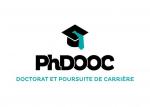 PhDOOC
PhDOOC  Aérocentre, Pôle d'excellence régional
Aérocentre, Pôle d'excellence régional  ASNR - Autorité de sûreté nucléaire et de radioprotection - Siège
ASNR - Autorité de sûreté nucléaire et de radioprotection - Siège  TotalEnergies
TotalEnergies  Ifremer
Ifremer  CASDEN
CASDEN  Généthon
Généthon  Laboratoire National de Métrologie et d'Essais - LNE
Laboratoire National de Métrologie et d'Essais - LNE 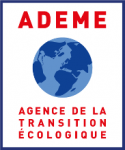 ADEME
ADEME  Groupe AFNOR - Association française de normalisation
Groupe AFNOR - Association française de normalisation 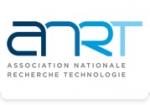 ANRT
ANRT  ONERA - The French Aerospace Lab
ONERA - The French Aerospace Lab  Institut Sup'biotech de Paris
Institut Sup'biotech de Paris  SUEZ
SUEZ  MabDesign
MabDesign  Tecknowmetrix
Tecknowmetrix

